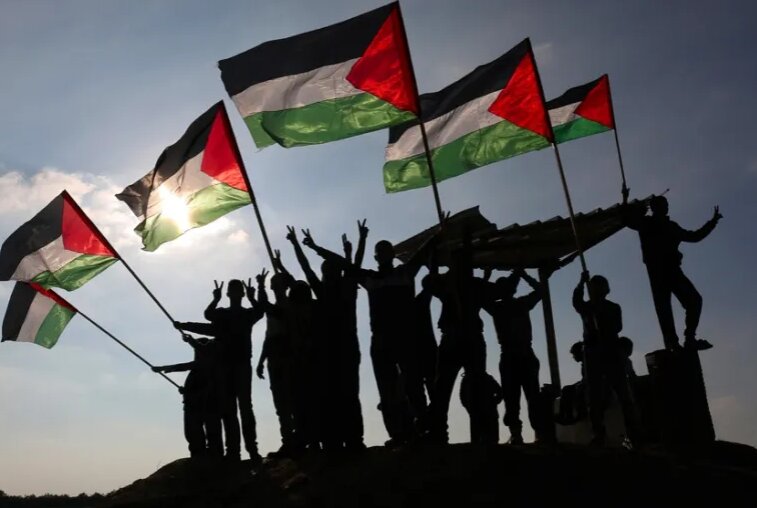National unity: The greatest weapon to liberate Palestine from the river to the sea

LONDON - Despite the provocative rhetoric promoting what is falsely termed the “cleansing of Gaza” and the continuation of the Zionist settlement project, Palestinian national unity stands out as an unbreakable shield and a solid fortress against attempts to erase the Palestinian identity.
The battle to liberate Palestine is no longer merely a territorial struggle—it has become an existential test of a people’s will, a people who refuse to surrender and who are redrawing the map of their struggle through the unity of their factions and resistance in a scene unseen in Palestine for decades.
After the Al-Aqsa Flood Operation, regardless of its consequences, unity is no longer a political option—it has become an existential necessity and a practical key to liberation.
This popular and resistance-based cohesion that shocked the occupier and disrupted its calculations embodies the highest meanings of belonging and heroism.
It connects Gaza to Jenin, Jerusalem to Lebanon, the West Bank to Baghdad, and Jaffa to Sana’a, signaling the birth of a coherent resistance axis that now holds the initiative.
This is where the role of the Axis of Resistance becomes evident: over years of confrontation, it has established a real deterrent balance that redefined the rules of engagement in the region.
The Zionist project: Between delusion and internal collapse
From its inception, the Zionist project was founded on a grand lie: “A land without a people for a people without a land.” But this mythical narrative is crumbling under demographic, political, and on-the-ground realities.
The internal legitimacy crisis plaguing what is called “Israel” is reflected in deep political and social divisions: five elections in three years, protests in the streets of Jaffa (which they seek to rename Tel Aviv) against the government, Ethiopian Jews demonstrating against racism, a crisis of trust between the military establishment and the political leadership, resignations and mutinies even within Unit 8200 of the intelligence corps—all of these are signs that this entity is experiencing an unprecedented internal tremor.
The painful blows suffered by the occupation government during its repeated aggressions on Gaza, the military surprises in the Al-Aqsa Flood Operation, and the security breaches in the West Bank and Jerusalem revealed that the so-called “invincible army” is now a myth of the past. Despair is creeping into the younger generation.
According to a survey published by Haaretz, 48% of young people between 18 and 30 seriously consider emigrating.
Applications for emigration to Canada, Australia, and Germany rose by 37% in the past three months alone.
Even former Minister of Immigration Pinchas Goldstein described the situation as “the point of no return,” saying that the entity is witnessing the largest reverse migration wave since the Second Intifada.
The diplomatic isolation of the entity is also deepening by the day, amid growing international recognition of the State of Palestine and the escalation of the Boycott, Divestment, and Sanctions (BDS) campaigns, which have successfully inflicted economic and moral damage on strategic Israeli sectors.
From fragmentation to a liberation strategy
Liberation from occupation is not achieved by emotions alone—it requires a unified national vision, based on comprehensive reconciliation among Palestinian factions and putting an end to the division that has weakened the Palestinian interior for years.
The time has come to activate the institutions of the PLO, unify the political discourse, and launch a clear liberation project from the river to the sea.
Popular resistance has proven its effectiveness, as seen in the previous Return Marches, and in the growing calls to revive Land Day and mark the Nakba anniversary with broader participation in the Return March. These marches have shown that the masses can generate global momentum that the occupation cannot ignore.
At the same time, the growing role of the Axis of Resistance—despite all the blows it has received—has formed a real umbrella of deterrence. Combining the expertise of Hezbollah, the support of Ansarallah, Iran’s capabilities, and above all, the heroism of the Gaza factions, this alliance has made war a costly option for the occupier.
International boycott campaigns, which now extend to major academic and economic institutions, have helped expose the true face of the occupation, especially after reports by international organizations described its practices as apartheid. These campaigns are no less important than field struggle; they complement and reinforce it.
The Liberation project: From resistance to statehood
The liberation of Palestine from the river to the sea is no longer a distant dream; it is becoming a realistic project whose features are unfolding day by day.
By leveraging the internal cracks in the fragile Zionist entity, mobilizing global popular support, and building solid regional partnerships with the Axis of Resistance, liberation is now closer than ever.
It is no longer possible to ignore the shifts brought about by the Al-Aqsa Flood operation. The operations rooms within the occupation entity have been thrown into confusion, and voices from within are calling to reconsider the very foundations of the Zionist project.
History is repeating itself—but this time, at a faster pace.
The very entity that sowed chaos in our region is now crumbling from within.
Unity is the path to victory
Yes, unity is not just a slogan raised on special occasions—it is the essence of survival and resistance. In the face of the collapse of the “Israeli” narrative and its structural weakness, Palestinian cohesion, supported by the Axis of Resistance, becomes a strategic weapon more powerful than conventional arms.
Palestine can only be liberated by a unified national grip on decision-making, rewriting history anew.
Palestine awaits no one’s permission—it awaits the unity of its people, the integration of its resistance, and one voice that says:
We are one people, with one land, and one cause… and our unity is our only path to freedom.
